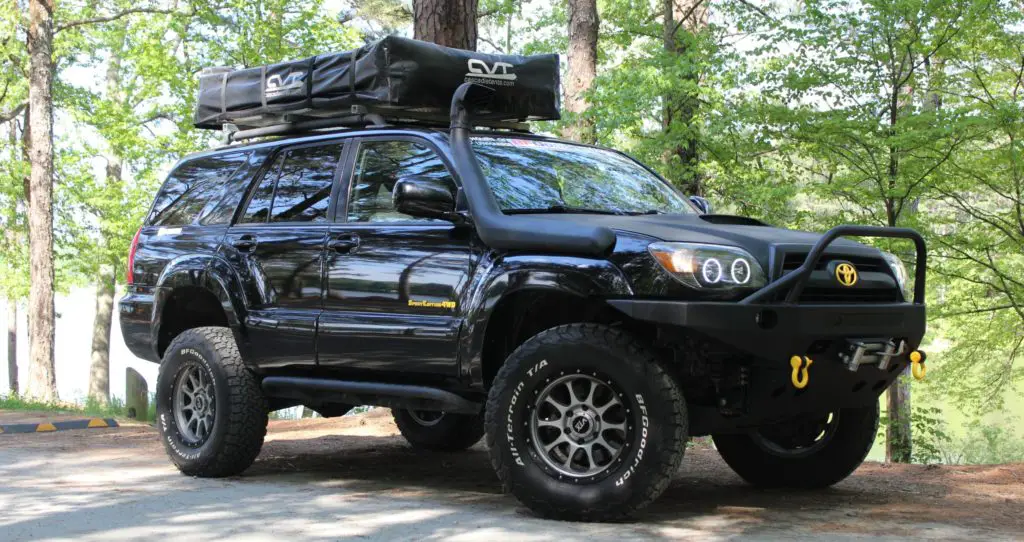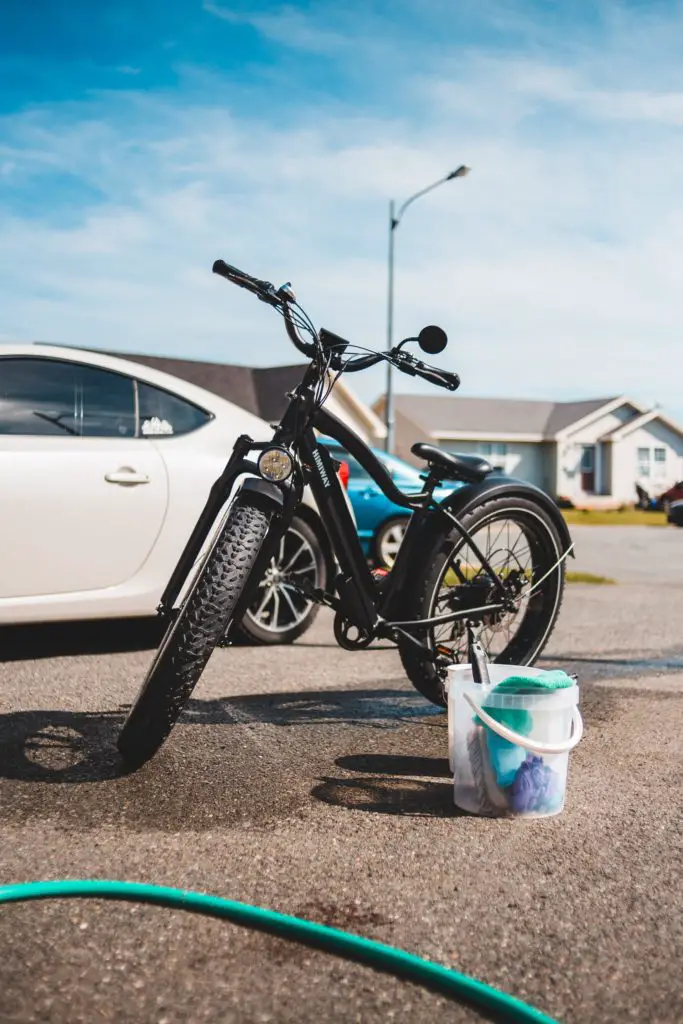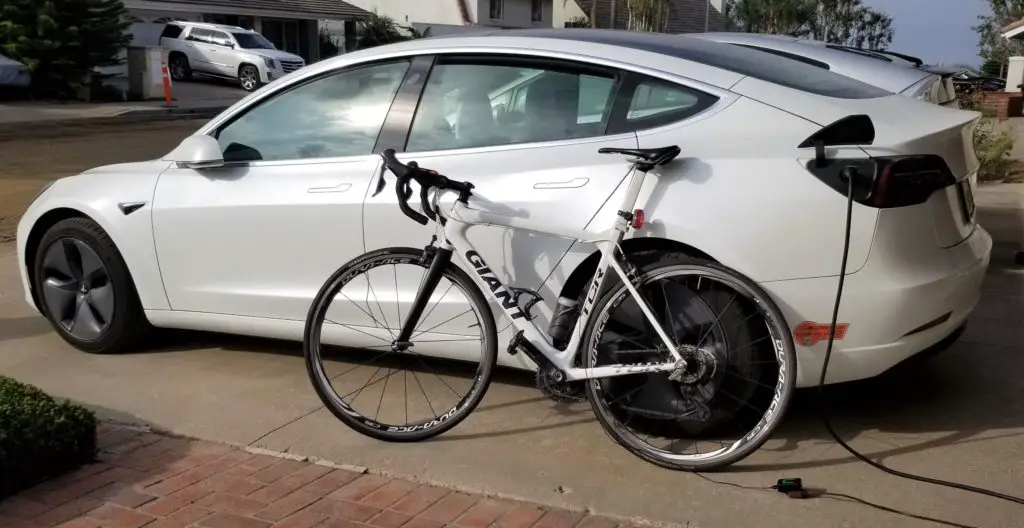How to Strap Bike to Roof Rack
**Articles may contain links that I earn compensation for if clicked and you make a purchase. As an Amazon Associate, I earn from qualifying purchases. These earnings do not actually impact the price of the product or service.
A bike rack makes it easy to carry bikes. Roof racks can be perfect for that purpose, giving proper trunk door access. Furthermore, if you have a reasonable budget, you can easily purchase a bike rack that doesn’t require further work.
However, as with everything in life, tying down bikes to roof racks can be challenging. Improper tie-downs can lead to injuries or significant accidents. Always remember to double-check your tie-downs to prevent such incidents.
Below are some tips to properly strap the bike to the roof rack without damaging your gear.
Please remember to check your vehicle’s owner manual to verify the weight carrying capacity of your car’s roof rack.

Table of Contents
How Do You Strap a Bike to a Factory Roof Rack?
While tying your bicycle or bike to the roof bars, you can think about three options; to hitch your bike with rope, ratchet straps, or bungee cords.
Comparatively, a strap is the easiest way as it can quickly tighten without serious tie knots.
Although, one must consider wind speed while carrying the bike on the roof rack. High wind speed may loosen straps or ropes.
Furthermore, you would need to consider your driving speed too. You may risk losing your bike if you drive at high speed, like 80 km/hr.
Bungee Cords
Bungee cords are elastic cords that are generally used for many purposes.
However, they might not be the best if you want to haul your bike tightly.
You may use these to mount and secure wheels over crossbars during transport.
Ratchet Straps
Ratchet straps are perfect for roof racks. If you want to tie down your bike directly and tightly to the bike rack, use ratchet straps. These straps are so rigid and intact that your bicycle won’t move even a bit.
Ropes
Other than ratchet straps, you can also use ropes to tie down your bicycle on a bike rack. You cannot directly attach ropes or hook them, and thus you have the option to tie knots.
While you use ropes to mount your bike, ensure to burn the loose ends of the rope to avoid unraveling. The trick might not be suitable for organic ropes, as those will keep burning.
 Tying Down the Bike
Tying Down the Bike
Check your vehicle weight capacity before you lift your bike to the bike rack.
Start with turning your bike rack into a soft space for safe transport and to protect the bars from grinding. The vibration around the bars during travel can lead to loose straps.
You can either use a blanket or pool noodle for this purpose. Furthermore, the bike can scratch the roof paint, and foam can prevent it.
Cut the pool noodle according to your requirement and wrap it around the bars of the bike rack.
Now pull the bike onto the bike rack. Make sure to place the bike from the start of the car roof to prevent the rear windshield from blocking.
If the bike is smaller than your vehicle, place it in the middle. Furthermore, remove the front wheel and put it in the car trunk if your rear view is still obstructed.
Attaching the Straps
Now you can start tying down your bike with the straps. In the case of ratchet straps and bungee cords, you may want to look at manuals to use them properly. For rope, you can use it in your own way.
Bungee cords use hooks and are simple, while straps require webbing through the middle spool’s slot. Get the cords or straps around the bike in a loop and make sure everything’s tight.
Tighten the straps to secure your bike, but ensure that the straps are not too tight. Or you could damage it.
If required, use two straps to ensure safety. But don’t forget to manage the excess strap. No one would want their strap flying in the air behind their car.
Finally, you can remove the pedals, rear wheel, and front-wheel to avoid movement or noise.
How Do I Lift My Bike to a Regular Roof Rack?
Many people prefer to carry their bicycles just by attaching them to crossbars. However, this may not be suitable.
We recommend you get regular bike roof racks to protect your gear. Two bike roof rack mounts are available on the market, fork mount and upright.
One type of bike rack, i.e., the hatchback, can hide your car’s license plate and cause you a fine. Therefore we don’t suggest you use such a bike rack.
Getting Your Bike Tied Down
-
Install the Rack
Check out the manufacturer’s directions and position your bike according to your car. Place the front crossbar between four mounting screws of the bike rack. Similarly, the back cross rails should be placed between two back bolts.
-
Attach the Bike to the Rack
Pull your bike up to the rack and secure it according to the manufacturer’s instructions. You may not need ropes or straps to attach your bike to the rack, but you can use them for your peace of mind.
-
Lock the Rack
Finally, remember to cross-check your rack lock before starting your drive. You wouldn’t want your bike to get stolen while you have parked your car.

How to Carry Your Bike Without a Bike Rack?
No matter whether your car has a roof rack or not, you can carry your bike anywhere.
You have the option of keeping your bike in your back seat while you remove both wheels and handlebars of it. You can also use a strap in a loop.
Conclusion
The perfect way of getting your bike tied to the roof rack depends on how you are doing it and what you’re carrying. However, some basics need to be followed, which are discussed in this article.
Roof racks can pose a danger if you don’t tie your bike correctly. Therefore you must always stay attentive when you strap your bike to the roof rack.
With all that, enjoy your journey to the fullest!


